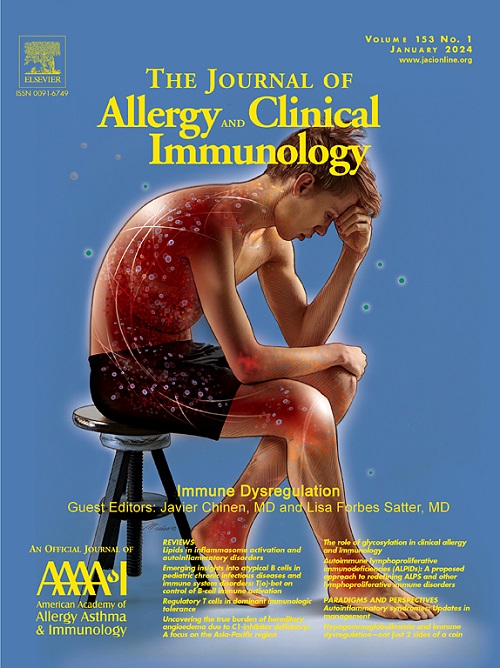CAR疗法:开发、设计和实施。
IF 11.4
1区 医学
Q1 ALLERGY
引用次数: 0
摘要
嵌合抗原受体(CAR)T 细胞和 NK 细胞疗法是治疗癌症和其他慢性疾病的一种前景广阔的策略。经过工程化的 CAR 构建物赋予免疫细胞以高度特异性靶向所需抗原的能力,从而实现对抗原表达细胞的定向应答。CAR T 细胞和 NK 细胞在治疗血液恶性肿瘤方面取得了显著的成功,但仍有大量患者对 CAR 疗法无效,而且它们对实体瘤的疗效仍然有限。在这篇综述中,我们对 CAR 疗法的开发、设计和实施(从实验室到临床)进行了广泛概述。我们讨论了 CAR 构建模块以及如何操纵这些模块以优化 CAR 功能,回顾了 CAR 疗法的 T 细胞和 NK 细胞的可能来源,并研究了 CAR T 细胞和 CAR NK 细胞的局限性。最后,我们讨论了 CAR 领域的最新突破,并探讨了这些进展在未来几年会如何影响 CAR 疗法的成功。本文章由计算机程序翻译,如有差异,请以英文原文为准。
CAR therapies: development, design, and implementation.
Chimeric antigen receptor (CAR) T and NK cell therapies represent a promising strategy for the treatment of cancers and other chronic diseases. Engineered CAR constructs endow immune cells with the ability to target desired antigens with high specificity, allowing for directed responses to antigen-expressing cells. CAR T and NK cells have shown marked success in the treatment of hematological malignancies, although there remains a large population of patients that fail to respond to CAR therapies and their efficacy in solid tumors is still limited. In this review, we provide a broad overview of the development, design, and implementation of CAR therapies, from bench to bedside. We discuss the building blocks of CAR constructs and how these can be manipulated to optimize CAR functionality, review the possible sources of T and NK cells for CAR therapies, and examine the limitations of both CAR T and CAR NK cells. Finally, we discuss recent breakthroughs in the CAR field and consider how these advances may impact the success of CAR therapies in the years to come.
求助全文
通过发布文献求助,成功后即可免费获取论文全文。
去求助
来源期刊
CiteScore
25.90
自引率
7.70%
发文量
1302
审稿时长
38 days
期刊介绍:
The Journal of Allergy and Clinical Immunology is a prestigious publication that features groundbreaking research in the fields of Allergy, Asthma, and Immunology. This influential journal publishes high-impact research papers that explore various topics, including asthma, food allergy, allergic rhinitis, atopic dermatitis, primary immune deficiencies, occupational and environmental allergy, and other allergic and immunologic diseases. The articles not only report on clinical trials and mechanistic studies but also provide insights into novel therapies, underlying mechanisms, and important discoveries that contribute to our understanding of these diseases. By sharing this valuable information, the journal aims to enhance the diagnosis and management of patients in the future.

 求助内容:
求助内容: 应助结果提醒方式:
应助结果提醒方式:


